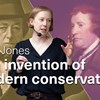drawn
Putting costs and benefits of ordeals together
Economics and Philosophy 37 Abstract This paper addresses how to think about the permissibility of introducing deadweight costs (so-called ‘ordeals’) on candidate recipients of goods in order to attain b
The Future of Housing and Technology in Japan – The Connected House Group Study Tour
The report describes experiences drawn from a study tour in Japan, June 2003. An important conclusion is that not only does the future of housing lay in technology, but technology is an integral part
Completed: How do human norms form and change?
Many societies are dominated by norms that are, in the long run, harmful to their members. How can these norms change?
On the Methodological Difficulty of Identifying Implicit Racial Beliefs and Stereotypes
American Sociological Review 85(6):1117-1122. In “Status Characteristics, Implicit Bias, and the Production of Racial Inequality,” Melamed, Munn, Barry, Montgomery, and Okuwobi present an innovative an

Daniel Hausman: What is a Fair Allocation of Healthcare?
Research seminar with Daniel M. Hausman, Research Professor at Center for Population-Level Bioethics at Rutgers University. This seminar is arranged by the Institute for Futures Studies and Center for
Emily Jones: Afterlives: Edmund Burke, Benjamin Disraeli, and the Invention of Modern Conservatism
Venue: Institute for Futures Studies, Holländargatan 13 in Stockholm or online Research seminar with Emily Jones, Lecturer in Modern British History at the University of Manchester. Register here > Abs
Deep learning diffusion by infusion into preexisting technologies - Implications for users and society at large
in: Technology in Society. 63, 101396 Abstract:Artificial Intelligence (AI) in the form of Deep Learning (DL) technology has diffused in the consumer domain in a unique way as compared to previous gene, i.e., by being added to preexisting technologies that are already in use. We find that DL-algorithms for recommendations or ranking have been infused into all the 15 most popular mobile applications (apps) in the U.S. (as of May 2019). DL-infusion enables fast and vast diffusion. For example, when a DL-system was infused into YouTube, it almost immediately reached a third of the world's population. We argue that existing theories of innovation diffusion and adoption have limited relevance for DL-infusion, because it is a process that is driven by enterprises rather than individuals. We also discuss its social and ethical implications. First, consumers have a limited ability to detect and evaluate an infused technology. DL-infusion may thus help to explain why AI's presence in society has not been challenged by many. Second, the DL-providers are likely to face conflicts of interest, since consumer and supplier goals are not always aligned. Third, infusion is likely to be a particularly important diffusion process for DL-technologies as compared to other innovations, because they need large data sets to function well, which can be drawn from preexisting users. Related, it seems that larger technology companies comparatively benefit more from DL-infusion, because they already have many users. This suggests that the value drawn from DL is likely to follow a Matthew Effect of accumulated advantage online: many preexisting users provide a lot of behavioral data, which bring about better DL-driven features, which attract even more users, etc. Such a self-reinforcing process could limit the possibilities for new companies to compete. This way, the notion of DL-infusion may put light on the power shift that comes with the presence of AI in society.
Graham Oddie: What’s so bad about adaptive preferences?
Graham Oddie, Professor of Philosophy, University of Colorado Boulder Abstract Our desires and preferences change, but one particular kind of change in preferences has been singled out for opprobrium—so
Daniel M. Hausman: What Is a Fair Allocation of Health Care?
ATTENTION!This seminar will be held at 15.00-16.45 (CET)/9.00-10.45 (EST) Register Research seminar with Daniel M. Hausman, Research Professor at Center for Population-Level Bioethics at Rutgers Univers

Emily Jones: Edmund Burke, Benjamin Disraeli, and the Invention of Modern Conservatism
This paper will explore key findings drawn from my first monograph, Edmund Burke and the Invention of Modern Conservatism, 1830-1914: An Intellectual History (OUP, 2017) and my forthcoming book, One N








